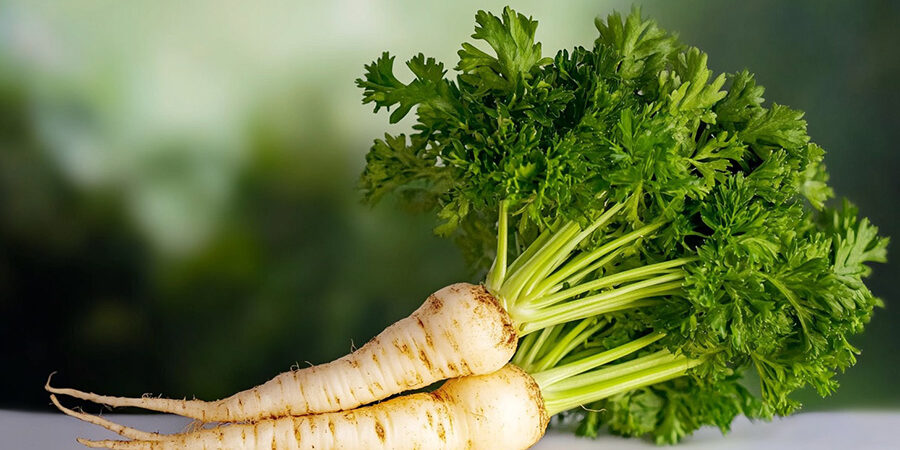With the support of our stable Hungarian producer base, this vegetable is always available in high quality in our wholesale assortment – ask us for an offer!
Parsley root is one of the most basic ingredients of Hungarian cuisine, which is not only a flavouring, but also a vegetable in its own right. It is easy to confuse it with parsnips, but its flavour is much more restrained, spicy and sweet. Root parsley is the root of the parsley plant, while the well-known green leaf is used separately in gastronomy as leaf parsley.
It originated in the Mediterranean and was known to the ancient Greeks and Romans, although it was initially used mainly for medicinal purposes. It is widespread in Europe, especially in Central and Eastern Europe. Root parsley has many health benefits: its high vitamin C and iron content supports the immune system and blood formation, while the essential oils it contains can have a positive effect on digestion.
Specificities of production
Parsley roots are mainly grown outdoors, as the plant requires a longer growing season and grows best in deep, loose, nutrient-rich soil. Greenhouse cultivation is rare and is more common for leaf parsley.
In Europe, Germany, Poland and Hungary are among the most important producers. In Hungary, it is mainly grown in large quantities in the sandy and loamy areas of the Great Plain, such as the Danube-Tisza area. The season for the domestic crop runs from September to March, but with proper storage it can remain available until spring.
Hungarian parsley roots are most likely to be found on the shelves in autumn and winter, while in spring and early summer there is a greater chance of imported products, typically from Italian or Dutch sources, reaching the markets.
How to choose good quality parsley roots?
There are several factors to consider when buying fresh and good quality parsley roots:
- The root should be firm, firm to the touch, not rubbery or wilted.
- The colour should be uniformly light beige or yellowish white, without brown spots or discolouration.
- Avoid bent, broken or cracked specimens.
- Smaller, slimmer roots tend to be more tender and less fibrous than their oversized, thicker counterparts.
Use in the kitchen
Parsley root is a versatile vegetable, a classic ingredient in broths, vegetable soups and other stews, but also goes well in cream soups, stews, side dishes or even roasted, in the form of a chopped vegetable, prepared spicy.
Its pleasant, spicy flavour is particularly good in combination with other root vegetables such as carrots and celery. It can be torn, grated, chopped and retains its characteristic flavour even after cooking, frying or even pureeing.
Storage advice
The parsley roots you have bought should be stored in a cool, dark, humid place. They can stay fresh for up to 2-3 weeks in the vegetable storage compartment of a fridge, especially if wrapped in a perforated plastic bag or damp tea towel. It is important not to wash before storage as moisture promotes rotting.
If you want to store it for longer periods, it is also excellent for freezing: after peeling, chopping and blanching, it will keep its quality for months.
Interesting facts about parsley root
- In the Middle Ages, parsley was used not only as a spice but also as a medicinal herb, mainly for its diuretic and digestive properties.
- The ancient Romans regarded it as a sacred plant and it was also used in funeral rites.
- Although the parsley leaf is better known, the root is just as important in gastronomy – especially in Hungarian cuisine.
- The parsley root is similar in appearance to parsnips, but has a leaner and milder flavour.
Tips for use in the kitchen
- When cooked in soup, don’t chop it too finely as it will easily fall apart; add it in larger chunks and remove it at the end.
- It is particularly tasty as a vegetable roasted in the oven: cut into rings, drizzled with olive oil, salt and fresh herbs, and roasted at 180°C for 25-30 minutes until crumbly.
- Parsley root makes an excellent vegetable puree: boil it in salted water and puree it with butter and a little cream.
- It’s also great as a cream soup: sautéed with onion and garlic, then poured over a base stock and blended to make a silky, flavourful soup.
- It can also be grated into vegetarian meatballs and vegetable patties, as it adds juiciness and flavour to the mass.


